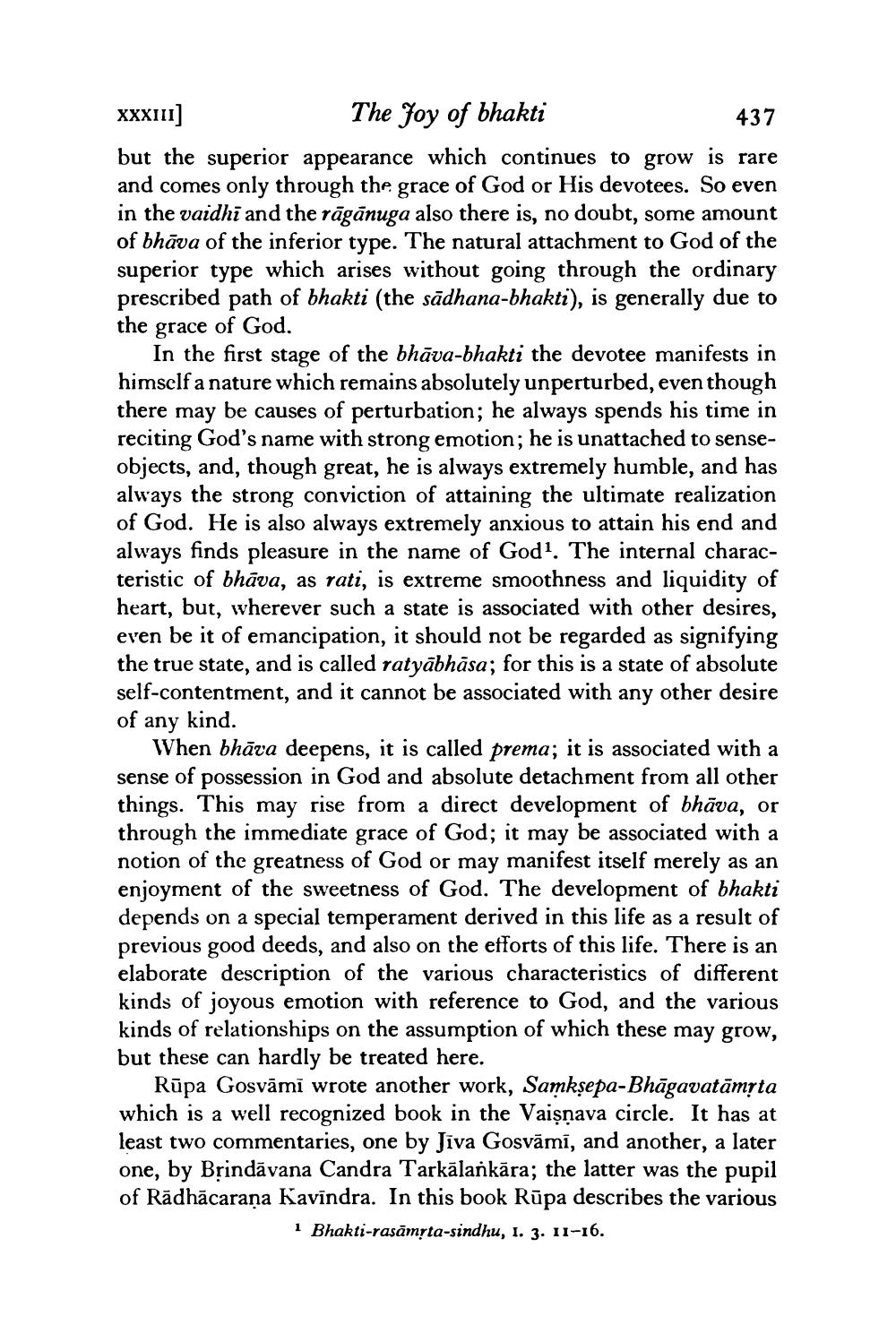________________
437
XXX11]
The Joy of bhakti but the superior appearance which continues to grow is rare and comes only through the grace of God or His devotees. So even in the vaidhi and the rāgānuga also there is, no doubt, some amount of bhāva of the inferior type. The natural attachment to God of the superior type which arises without going through the ordinary prescribed path of bhakti (the sādhana-bhakti), is generally due to the grace of God.
In the first stage of the bhāva-bhakti the devotee manifests in himself a nature which remains absolutely unperturbed, even though there may be causes of perturbation; he always spends his time in reciting God's name with strong emotion; he is unattached to senseobjects, and, though great, he is always extremely humble, and has always the strong conviction of attaining the ultimate realization of God. He is also always extremely anxious to attain his end and always finds pleasure in the name of God'. The internal characteristic of bhāva, as rati, is extreme smoothness and liquidity of heart, but, wherever such a state is associated with other desires, even be it of emancipation, it should not be regarded as signifying the true state, and is called ratyābhāsa; for this is a state of absolute self-contentment, and it cannot be associated with any other desire of any kind.
When bhāva deepens, it is called prema; it is associated with a sense of possession in God and absolute detachment from all other things. This may rise from a direct development of bhāva, or through the immediate grace of God; it may be associated with a notion of the greatness of God or may manifest itself merely as an enjoyment of the sweetness of God. The development of bhakti depends on a special temperament derived in this life as a result of previous good deeds, and also on the efforts of this life. There is an elaborate description of the various characteristics of different kinds of joyous emotion with reference to God, and the various kinds of relationships on the assumption of which these may grow, but these can hardly be treated here.
Rūpa Gosvami wrote another work, Samkṣepa-Bhāgavatāmsta which is a well recognized book in the Vaisnava circle. It has at least two commentaries, one by Jiva Gosvāmī, and another, a later one, by Brindāvana Candra Tarkālankāra; the latter was the pupil of Rādhācarana Kavindra. In this book Rūpa describes the various
1 Bhakti-rasāmsta-sindhu, 1. 3. 11-16.




